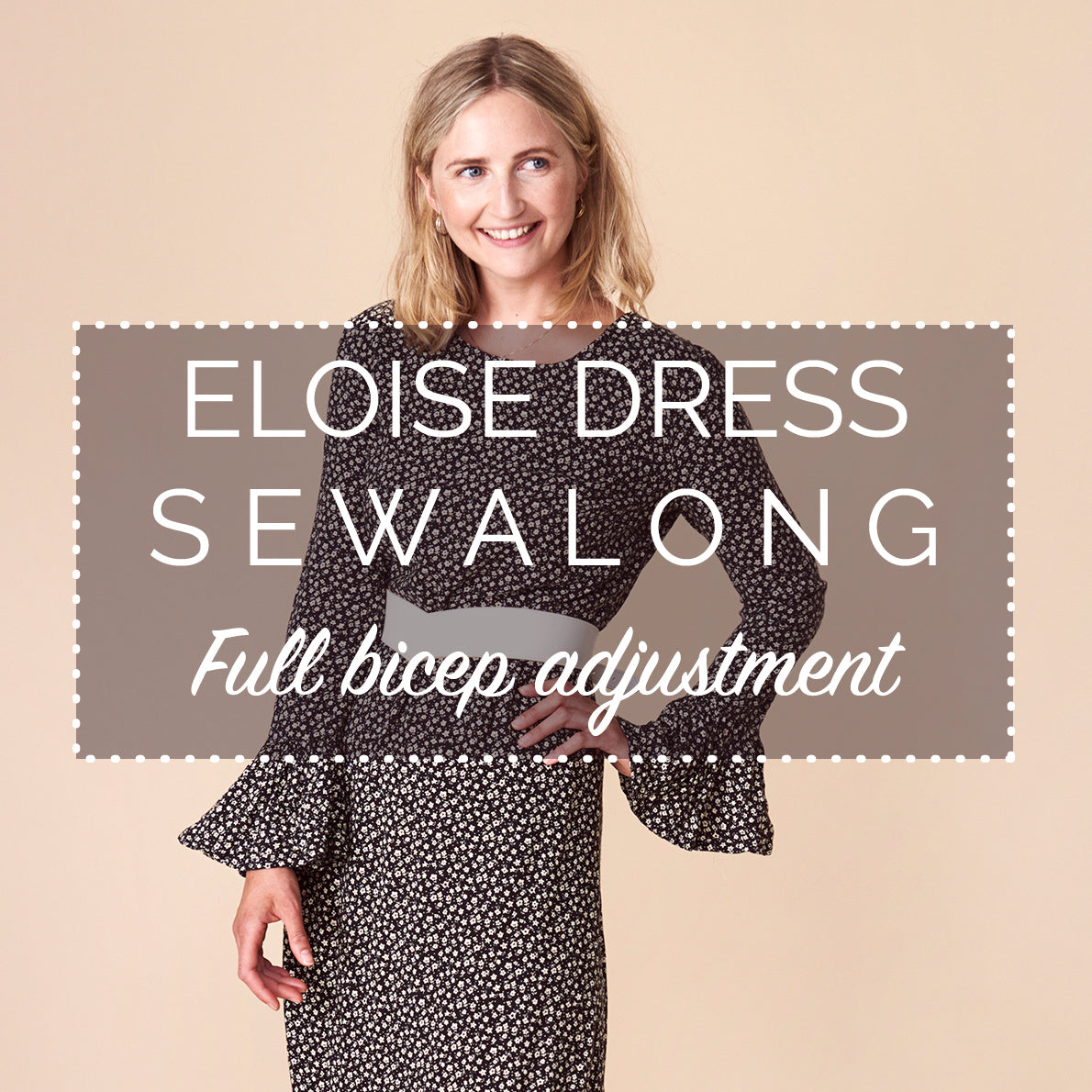Not only is a sleeve that's too tight not a great look, it's uncomfortable as hell, and will distort the fit of the dress across the shoulders and bust as your arms pull on the fabric when you move.
In this post we'll be showing you how to alter the sleeve of the Eloise dress for a fuller bicep, but you can apply this same technique to pretty much any sleeve pattern.

**To be taken to all the posts in the Eloise Sewalong, please click here**
HOW TO ALTER A SLEEVE FOR A FULL BICEP
In order to decide how much you want to increase the width of your sleeve by, measure the circumference of your bicep a couple of inches down from your armpit, adding a little extra so that the tape measure encircling your bicep mimics how you'd like your sleeve to fit. You could also measure the bicep of a sleeve on a garment that already fits you well. You'll also need to measure your cuff (or the cuff of an existing sleeve) in the same way, although you may not need to alter the width of the cuff.
Compare these measurements to the width of your sleeve pattern at the bicep and cuff (minus the seam allowance). Whatever the difference is, is how much you'll need to increase your sleeve width by.
For example, if your ideal bicep circumference (with a little wearing ease included) is 15", but the sleeve width of your size for this pattern is 14", you'll need to increase the width of your sleeve by 1".
Start by taking your sleeve pattern piece and marking out the seam allowance lines at the sleeve head and underarm seams:
Please note that we are using itty bitty replicas of our pattern to demonstrate - it's not full scale!
Draw a vertical line down the centre of your sleeve, marking a hinge point at the seam allowance with a little circle.
Now draw a horizontal line across the sleeve at the fullest part of the sleeve, right where the underarm and sleeve head seam allowances collide. You'll need two little hinge circles where this line meets the seam allowance as well.
Starting from the bottom, cut up the vertical line until you reach the hinge.
Then snip into the seam allowance at the top of your line up to the hinge. Keeping that hinge point intact allows you to open up the sleeve without altering the seam line at the sleeve head.
Now cut along the horizontal lines up to the hinges, and then again snip the seam allowance up to the hinge points.
You'll see that you can now open up the width of the sleeve, without changing the length of the sleeve, or adding any volume to the sleeve head. Note that as you open up the width, the horizontal lines will overlap.
If you are altering the width at the bicep but not at the cuff, keep the cuff opening together, like this:
If you are also adding some width at the cuff, your alteration will look more like this:
Slip some scrap paper underneath your sleeve to fill the space and tape it down.
True out the cuff by drawing a line straight across...
...and redraw the curve at the sleeve head.
Trim away the excess paper and you're done!
And there you have it! With all alterations, we highly recommend that you make another toile to check that you're happy with the alterations that you made before cutting into your delicious fashion fabric!















Comments on this post (1)
This was a great help. I kept trying to figure this out but I was not able. Makes sense finally
— Priscilla McDaniel